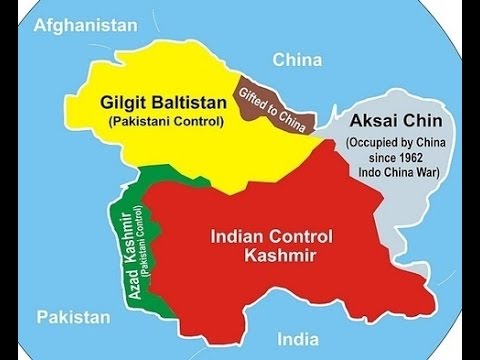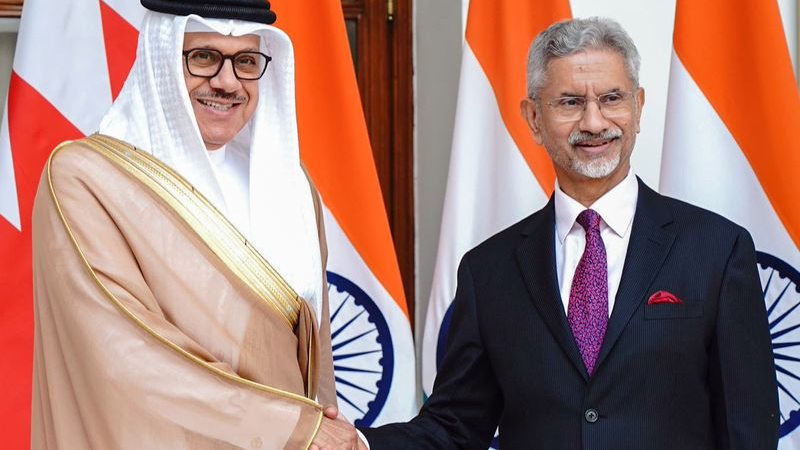Which government’s better: Pakistan Occupied Kashmir vs J-K vs Gilgit Baltistan

Advertisement
In the India-Pakistan conflict, Kashmir has been a constant subject of constant conflict. While for India, Jammu and Kashmir, Pakistan Occupied Kashmir (PoK) and Gilgit Baltistan are all part of India, for Pakistan, PoK is a territory that it has claimed is ‘azaad’. Gilgit Baltistan, similarly, is also under the Pakistani occupation.
A study released by organisation Law and Society Alliance lists the comparison between PoJK, JK and Gilgit-Baltistan as far as the condition of living is concerned.
The study was a mapping exercise of human development and human rights conditions existing in J&K and PoJK along with G-B, followed by a comparative analysis of development components under various categories.
There are several aspects that were compared in the report as far as the living conditions, human rights conditions and development in the respective regions are concerned.
Talking about budget allotment, the report mentions that the PoJK government allocated Pakistani Rupee 12,156 crore or US$773 million for its 2019-20 budget. On the other hand, J&K spent Indian National Rupees 88,911 crore or US$12.4 billion in the same fiscal year.
India allocated funds which is 16 times higher compared to the amount spent by Pakistan in PoK.
In terms of literacy rate, Gilgit-Baltistan is at an abysmal stage, per the report. The report cites Pakistani non-profit organisation Pakistan Institute for Peace Studies, Islamabad (PIPS) to say that the literary rate in the area is an abysmal 14% for men and 3.5% for women.
In Pakistan Occupied Kashmir, the literacy rate is far better, standing at 60%.
The literacy rate in Jammu and Kashmir, on the other hand, is 67.16%.
The spending by the respective governments on education is also a telling market of how seriously the governments view education and literacy in the respective regions. According to the report, India spent $1.55 Billion on education in JK, and has 12 Universities
In Pakistan Occupied Jammu and Kashmir, Pakistan spent $173 million, and has 6 universities.
What is worse is that there is no record per se of any expenditure in Gilgit Baltistian. It has only 20 Universities and the literacy rate is less than 20%.
The budget of PoJK for health in the fiscal year 2019-20 was US$62 million. Whereas, India allocated $618 million for health in year 2019. The comparison of relative health expenditures of both the governments reflects a similar trend observed in education expenditure, as the budget allocated by India in Jammu and Kashmir is approximately 11 times more than that by Pakistan in PoJK.
While Pakistan infant mortality rate is 62 per thousand infants, it does not even include PoJK and Gilgit-Baltistan while measuring IMR.
The report says, “available statistics suggest that G-B’s maternal mortality ratio hovers between 250 and 600 per 100,000 live births – among the highest in Pakistan”.
According to the report, the number of hospitals in Jammu and Kashmir stands at 5,534 while in PoJK, the number of hospitals is only 73. The situation is far worse in GB where the number of hospitals is only 33. The infant mortality rate also shows a massive difference. In JK, the IMR is 23 while in PoJK, it is 62.
The report further states, “According to Agha Khan Rural Support Program Survey, the annual per capita income of G-B is less than US$268, which is one-quarter of Pakistan’s national average per capita income. The per capita income of PoJK is US$1,512, which is around six times higher than the per capita income of G-B and substantially higher than that of J&K. Per capita income of J&K is US$1,000 per annum. Despite a moderate per capita income, the poverty rate in J&K is extremely low and currently stands at 10.35 per cent, which is almost half of the national average of around 21 per cent.
The report also mentioned the massive decline in the Shia population in Gilgit-Baltistan.
One of the major reasons, according to the report, for the decline of the population of Shias in GB is the concerted ethnic cleansing.
“Besides numerous violent attempts of ethnic cleansing in these regions, Pakistan government and military, under the leadership of Zia-ul-Haq, made several continuous attempts to alter the ethnic demography of the region. Post-1980s, Sunni Muslims from hegemonic Pakistani provinces like Punjab and Khyber Pakhtunkhwa started to make an influx through business routes and started to gradually settle in the region,” the report states.
According to the report, Jammu and Kashmir (both regions combined) have a majority Muslim population.
According to the last census of 2011, Muslims are the majority in the state, constituting 68.31 per cent of the total population. Muslims are in a majority in 17 of the 22 districts of the state. Whereas, Hindus are in a minority in J&K forming 28.43 per cent of the total population, with the majority in four districts. Other minorities in J&K are Sikhs (1.87 per cent), Buddhists (0.9 per cent) and Christians (0.28 per cent).
While Pakistan has tried to fester communal tension and terrorism in Kashmir which led to the genocide and ouster of Kashmiri Pandits in 1990-1991, the Jammu and Kashmir region combined has seen a steady increase in population.
“Interestingly, there has been a remarkably steady, stable similarity in the population growth of all the communities for more than five decades in J&K. In 1961, Muslims with a population of 2.4 million, constituted 68.31 per cent of the state’s population of 3.6 million and Hindus with a population of one million made up 28.45 per cent. It reflects that the ethnic and religious demographics of the state has been absolutely sustained and constant. It also gives a strong rebuttal to the contentious allegations of the Islamic Republic of Pakistan on India, of trying to alter the religious demography of the state,” the report said.
Another major difference between the governance of PoJK, J&K, and Gilgit Baltistan is the level of religious discrimination. In Pakistan and all territories under its illegal occupation, the discrimination on the basis of religion is rather rampant, the report states.
In the June 2018 report, OHCHR drew attention to the provision in PoJK’s Interim Constitution, which in similarity with Pakistan’s Constitution, defines who may be considered to be a ‘Muslim’ and uses this definition to discriminate against the minority Ahmadiyya community. The amended Interim Constitution of 2018 has made no changes to this discriminatory provision and declared the Ahmadiyya to be non-Muslims. Other than this, the strict blasphemy laws have also been widely criticised as being discriminatory and draconian.
On the other hand, the report says, “Islam has been flourishing in the Kashmir valley in J&K. According to the Centre for Policy Analysis, Kashmir Valley of J&K has witnessed a doubling number of births annually since Census 2001, despite being affected by Pakistan-sponsored terrorism.
“Of the children born in the Valley, 99.13 per cent are Muslims. The spurt in live births in J&K is such that an average Muslim woman in the Valley can now expect to produce 1.34 extra children over her lifetime compared to what she could have expected in 2001,” highlights the report.
Furthermore, the report analyses how China Pakistan Economic Corridor (CPEC) has been forced on the inhabitants of Gilgit-Baltistan despite disenchantment and resentment. “According to an International Crisis Group (ICG) report, the people of G-B are resentful because they feel CPEC projects were designed and implemented without their input and will be of little benefit to them.”
The report further said that it “could also affect G-B’s delicate Sunni-Shia demographic balance.” The ICG concluded, “the State’s response to local dissent and alienation has been an overbearing security presence, marked by Army checkpoints, intimidation and harassment of local residents and crackdowns on anti-CPEC protests”.
In Jammu and Kashmir however, women’s rights and the rights of indigenous people were restored after the abrogation of Article 370 and 35 A.
The report notes: “Through the abrogation of Articles 35A and 370, the Government of India has ensured the entitlement of property rights to women of the state and ended the decades-long anti-women discriminatory process. It has also entitled liberty to women of the state with the choice to marry citizens outside the state, without losing rights of inheritance in ancestral property.”
According to the report by Law and Society Alliance, the PoJK Interim Constitution (13th Amendment) Act, 2018 entitles the Pakistani government to authoritatively suppress dissenting voices. It states, “No person or political party in Azad Jammu and Kashmir shall be permitted to propagate against, or take part in activities prejudicial or detrimental to, the ideology of the state’s accession to Pakistan.”
Further, members of nationalist and pro-independence political parties claim that they regularly face threats, intimidation, and even arrests by local authorities or intelligence agencies, for their political activities.
There are several incidents cited in the report, where Pakistan targeted and even convicted journalists from PoJK for carrying out their regular duties.
According to the International Crisis Group (ICG), Pakistani intelligence officials have also warned journalists in G-B against criticising the CPEC projects.
Advertisement






